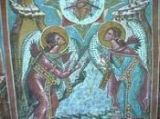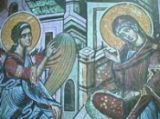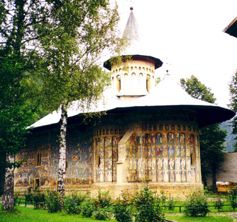
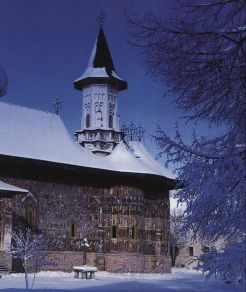

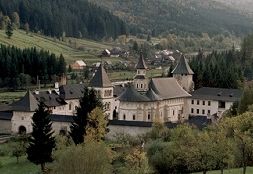
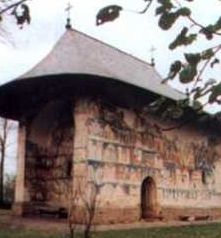


Moldovita monastery was built and painted between 1532 and 1537. The frescoes almost come alive with with the rich red and gold colours used in the paintings. The frescoes inside and out are characterised by scenes of Moldavian daily life. During the 14th century, many hermits lived in this area. Soon, a monastery was erected, although it collapsed at the beginning of the 16th century. The ruins can still be seen today.
Inside are many treasures, including Petru Rares' chair. There is also a bible donated by Catherine the Great. Each page was made from the skin of an unborn lamb, killed together with its mother.
Many frescoes are inspired by local traditions. According to custom, souls are judged as soon as they have died and must overcome several barriers before entering Paradise, after having paid their tribute to the devil. This is the origin of an old Romanian tradition of throwing coins into a dead personís coffin or into the recently dug grave.
